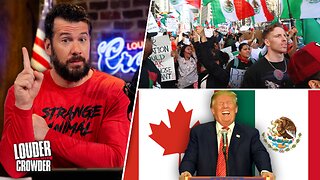Premium Only Content

"Clasping Coneflower: A Hardy Flower for Pollinators"
The clasping coneflower, scientifically known as Rudbeckia amplexicaulis, is a perennial flowering plant that belongs to the Asteraceae family. It is native to the central and eastern regions of the United States, thriving in a variety of habitats. Here’s an overview of the clasping coneflower:
Description:
Appearance: The clasping coneflower typically grows to a height of about 1 to 3 feet (30 to 90 cm). It features distinctive yellow daisy-like flowers with a central brown or black cone, giving it the classic "cone flower" appearance.
Leaves: The leaves are lance-shaped and clasp the stem, which is characteristic of the species. They are dark green and can be somewhat hairy.
Blooming Season: The flowers bloom from mid-summer to early fall, usually from July to September, providing a vibrant display during this period.
Habitat and Distribution:
Rudbeckia amplexicaulis is commonly found in prairies, open woods, and along roadsides. It prefers well-drained soils and can tolerate a range of conditions, including drought.
This species is native to a variety of states, particularly in the Midwest and the eastern United States, where it is often a part of the natural flora.
Cultivation:
Clasping coneflower is favored for its ornamental value and is often used in wildflower gardens, meadows, and naturalized areas.
It thrives in full sun but can also tolerate partial shade. It is relatively low-maintenance and can be grown in average to poor soil conditions.
Deadheading spent flowers can promote extended blooming, and the plant is generally resistant to deer and pests.
Ecological Importance:
The clasping coneflower is beneficial for pollinators, attracting bees, butterflies, and other insects. It serves as a food source for these species and helps support local ecosystems.
Uses:
In addition to its ornamental use, the clasping coneflower can be part of restoration projects, helping to reestablish native plant communities.
It may also have traditional medicinal uses, although it is not as commonly noted for medicinal properties compared to other species in the Rudbeckia genus.
Conclusion:
Rudbeckia amplexicaulis, or clasping coneflower, is an attractive and hardy plant that brings bright color and ecological benefits to gardens and natural landscapes. Its resilience and appeal make it a popular choice among gardeners and conservationists alike.
-
 LIVE
LIVE
Steven Crowder
2 hours ago🔴 Why Trump & America Will Dominate the Global Trade War
44,395 watching -
 DVR
DVR
vivafrei
14 hours agoLive with "Bitcoin Jesus" Roger Ver - the Indictment, Law-Fare and the War on Crypto
60.6K7 -
 LIVE
LIVE
Bannons War Room
1 year agoWarRoom Live
31,673 watching -
 LIVE
LIVE
LFA TV
22 hours agoTARIFF TRADE WAR! | LIVE FROM AMERICA 2.3.25 11am
4,994 watching -
 LIVE
LIVE
Caleb Hammer
1 hour agoProfessional Redditor Treats His Wife Like A Pet | Financial Audit
302 watching -
 36:07
36:07
Rethinking the Dollar
1 hour agoTit-for-Tat Trade Wars: Why Gold Is Still Winning (Trade Wars Hurt Your Money!)
4.19K -
 56:02
56:02
Randi Hipper
1 hour agoBITCOIN AT CRITICAL LEVELS AS MARKET CRASHES! LATEST PRICE UPDATE HERE
17.9K1 -
 2:22:37
2:22:37
Matt Kohrs
10 hours agoMARKET CRASH! Trump's Trade War Bloodbath || The MK Show
50.4K6 -
 1:16:40
1:16:40
Graham Allen
3 hours agoCanada WILL LOSE!! Trudeau Enters Trade War With The US! + Zelensky Is Missing 102 BILLION?!
77.9K57 -
 59:17
59:17
Kyle Fortch
2 hours ago $0.86 earnedJon Kilmer: Touring With Kendrick Lamar, Steve Aoki & mike, Creating A Brand | THE ONE SHEET S1E2
15.1K1